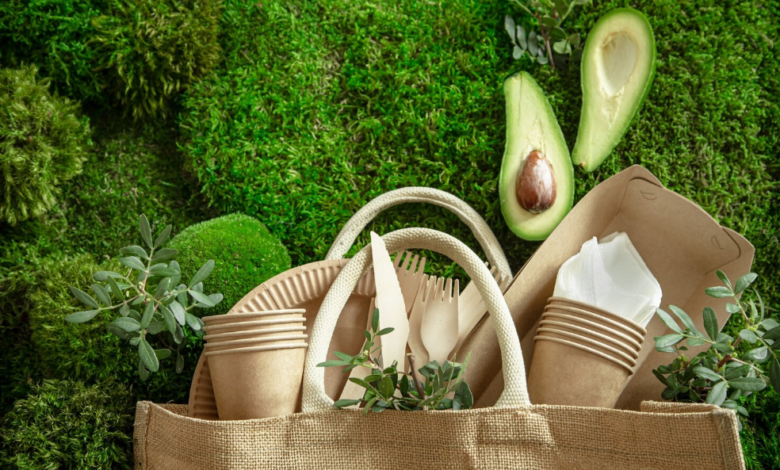Eco-Friendly Wine Packaging for Italian Wine Online Buyers

The Rise of Eco-Friendly Wine Packaging
Why Wineries Are Rethinking Traditional Bottles
It feels like just yesterday that glass bottles were the only way to go for wine. But things are changing, and fast. Wineries are starting to look beyond the classic glass bottle, and it’s not just for show. The wine industry is waking up to the fact that how wine is packaged matters, a lot. Think about it: glass is heavy, it breaks easily, and shipping all that weight costs a pretty penny and uses a good amount of fuel. Plus, let’s be honest, not everyone wants to lug a case of wine home from the store or pay for the shipping when ordering online.
Consumer Demand for Sustainable Options
People are paying more attention to what they buy and how it impacts the planet. This is especially true for younger folks. They want brands that care about the environment, and that includes the packaging. If a winery is doing good things in the vineyard, like using organic methods, it just makes sense for their packaging to be eco-friendly too. It’s about being consistent and showing you’re serious about sustainability all the way through.
Aligning Packaging with Modern Values
Beyond just being green, new packaging options let wineries connect with customers on different levels. They can be more creative with designs, making their products stand out whether they’re on a store shelf or being scrolled past online. These alternative formats also make wine more accessible for different situations – think picnics, outdoor concerts, or just a single glass at home. It’s about making wine fit into people’s lives more easily, which is a big deal these days.
Innovative Materials for Sustainable Wine
When you’re browsing for italian wine online, you might notice some packaging that looks a little different from the usual glass bottle. And that’s a good thing! Wineries are getting pretty creative with how they package their wine, and it’s not just about looking cool. They’re thinking about the planet, too.
The Advantages of Paper Bottles
Paper bottles are a pretty neat idea. They’re made mostly from paper, which sounds weird for wine, right? But they usually have a special liner inside to keep the wine fresh and safe. The big win here is that they use way less material than glass and are much lighter. Think about shipping – lighter means less fuel burned. Plus, paper is generally easier to recycle than glass in many places.
Exploring Flat PET Bottles
Then there are the flat PET bottles. These are made from recycled plastic, which is awesome because it helps clean up plastic waste. They’re designed to be super flat, almost like a large envelope. This means you can fit a lot more of them into a shipping box or onto a shelf compared to round bottles. It’s a smart way to cut down on shipping space and costs, and they’re pretty tough, too, so less chance of breakage.
The Role of Tetra Paks in Sustainability
Tetra Paks, those familiar carton-like containers, are also showing up more for wine. They’re made from layers of paper, plastic, and aluminum. While the mix of materials might sound complicated, they’re designed to be recyclable, and they do a great job of keeping the wine protected from light and air. They’re lightweight and stackable, making them efficient for transport and storage. For a quick picnic or a casual get-together, they’re really convenient.
The shift towards these alternative wine containers isn’t just a trend; it’s a response to growing environmental concerns and a desire for more practical, everyday wine options. For those buying italian wine online, these choices offer a way to support wineries that are actively trying to reduce their impact.
Brands Leading the Way in Eco-Conscious Packaging
It’s really interesting to see how some wine brands are stepping up and ditching the traditional glass bottle. They’re not just doing it to be trendy; it’s about making a real difference and connecting with people who care about the planet. Let’s look at a few that are really making waves.
Bota Box: A Pioneer in Recycled Materials
Bota Box has been around for a bit, and they’re known for their commitment to eco-friendly wine packaging. Their boxes are made from 100% post-consumer recycled materials, which is pretty impressive. They’ve shown that you can offer a good product in packaging that’s kind to the environment. It’s a smart move that appeals to a lot of people these days.
Bandit Wines: Embracing Tetra Pak Innovation
Bandit Wines is another brand that’s caught my eye. They’re using Tetra Paks, which are lightweight and recyclable. What’s cool is their branding – it’s bold and colorful, making their wine stand out. These Tetra Paks are great for when you’re out and about, like for a picnic or a camping trip. They’re easy to carry and don’t take up much space.
When in Rome: Italian Wines in Paper Bottles
When in Rome is doing something really different by offering Italian wines in paper bottles. This is a big deal because paper bottles are super light and have a much smaller carbon footprint compared to glass. They’re made from recycled paperboard with a special liner to keep the wine fresh. It’s a clear signal that sustainability is a core part of their identity. Plus, the whole outside of the bottle can be printed, giving them a lot of room to tell their story.
Garçon Wines: Championing Flat Bottle Design
Garçon Wines is all about the flat bottle. These bottles, often made from recycled PET plastic, are designed to be stacked and save space, which is a big win for shipping and storage. They’re about a fifth of the weight of a glass bottle and can cut down on transport emissions significantly. It’s a clever design that’s both practical and eco-friendly, showing that innovation in wine packaging is happening everywhere.
Benefits Beyond Environmental Impact
Appealing to Younger, Eco-Conscious Consumers
It’s not just about saving the planet, though that’s a big part of it. Newer generations, like Millennials and Gen Z, really care about where their products come from and how they’re made. They like things that are easy to grab and go, perfect for a picnic or a day at the beach. Plus, these alternative packages often have a more relaxed, approachable feel, which can make wine seem less stuffy and more accessible to people who might be new to it. Brands that use these modern packaging options are showing they’re in tune with what today’s consumers want.
Differentiating Brands on Shelves and Screens
Let’s be honest, a wall of green glass bottles can look pretty similar. When you’re trying to catch someone’s eye, whether they’re browsing a store aisle or scrolling online, something different really stands out. A cool-looking paper bottle or a brightly colored Tetra Pak can tell a story about your brand’s personality. It gives wineries a chance to get creative with their look and connect with people visually. It’s a way to break through the noise and make your wine memorable.
Lower Costs and Improved Shipping Efficiency
Glass bottles are heavy, right? And they break easily. That makes them expensive to ship and handle. On the other hand, things like paper bottles or Tetra Paks are much lighter and sturdier. This means lower shipping costs, especially for direct-to-consumer sales. It can also mean fewer breakages, which saves money and reduces waste. For wineries, this can translate into better profit margins without compromising the quality of the wine inside.
Think about it: less weight means fewer trucks on the road, and fewer trucks mean less fuel burned. It’s a simple equation that adds up to a win for everyone involved, from the winery to the person enjoying the wine.
Addressing Perceptions of Alternative Wine Formats
Okay, so we’ve talked about all the cool new ways wineries are packaging their wine, right? Paper bottles, flat ones, boxes – the whole deal. But let’s be real, not everyone is jumping on board just yet. There’s still this old-school idea that wine has to come in a heavy glass bottle with a cork. It’s like, ingrained in our heads, you know?
Overcoming the ‘Inferior Quality’ Stigma
This is a big one. Some people see anything other than glass and immediately think the wine inside isn’t as good. It’s like if you buy a shirt that isn’t in a fancy box, you assume it’s cheap, even if it’s not. We need to show people that the packaging doesn’t actually change the wine itself. It’s the same great Italian wine, just in a smarter container. Think about it: a lot of really good spirits are now in paper bottles, and nobody bats an eye. That’s helping a lot.
The Psychology of Wine Packaging Familiarity
We’re all creatures of habit. For generations, wine has been in glass bottles. It’s what we’re used to seeing on shelves, in restaurants, and in our homes. When something new comes along, it can feel a bit… off. It’s like trying a new route to work; it feels weird at first, even if it’s faster. We need to get comfortable with these new looks. It’s about building trust and showing that these alternatives are just as reliable, if not more so.
Consumer Acceptance of New Wine Containers
So, how do we get people to actually try these new formats? It’s a mix of things. Education is key – telling people why these changes are happening and the benefits. Plus, seeing brands they already like or trust making the switch helps a ton. If a winery they love starts using paper bottles, they’re more likely to give it a shot.
Here’s a quick look at what consumers are saying:
- Positive Feedback: Many younger drinkers and those focused on sustainability are really into the new options. They like the convenience and the eco-friendly aspect.
- Hesitation: Some traditional wine drinkers are wary. They associate glass with quality and tradition.
- Curiosity: A good chunk of people are just curious and willing to try something different, especially if the price or convenience is right.
Ultimately, it’s about shifting the mindset. The wine inside is what matters, and the packaging is just the vessel. As more people realize the environmental and practical upsides, acceptance will naturally grow. It’s a process, but one that’s definitely underway.
The Future of Eco-Friendly Wine Packaging
Reducing Carbon Footprints in Wine Transport
So, what’s next for wine packaging? It’s all about making things lighter and smarter. Think about it: shipping heavy glass bottles all over the place really adds up in terms of carbon emissions. New materials like paper bottles or flat PET bottles are way lighter, and that means less fuel burned during transport. It’s a pretty straightforward idea, really. If you cut down on weight, you cut down on emissions. This is becoming a big deal, especially with more people buying wine online and wanting it delivered right to their door. Plus, these lighter options are often more durable, meaning fewer breakages and less waste overall. It’s a win-win, honestly.
Enabling New Use Cases and Occasions
Beyond just being better for the planet, these new packaging types are opening up all sorts of possibilities for when and where we can enjoy wine. Forget needing a corkscrew and a proper glass for a picnic or a day at the beach. Cans and pouches are perfect for those casual, on-the-go moments. Imagine taking a chilled rosé in a can to an outdoor concert or having a flat bottle that easily slips into a backpack for a hike. It makes wine more accessible and less fussy, fitting into more parts of our lives. This flexibility is a huge plus for both consumers and wineries looking to reach new customers.
The Growing Momentum for Alternative Formats
It feels like we’re really at a turning point with wine packaging. For a long time, glass bottles were just the standard, and changing that seemed like a big ask. But now, with more people caring about sustainability and convenience, alternative formats are gaining serious traction. You see brands experimenting with paper bottles, flat plastic bottles, and even pouches. It’s not just about being green, though that’s a huge part of it. It’s also about making wine easier to buy, transport, and enjoy.
The shift towards alternative wine packaging isn’t just a trend; it’s a response to changing consumer values and environmental realities. Wineries that embrace these innovations are not only reducing their impact but also positioning themselves for future success.
Here’s a quick look at what’s driving this change:
- Consumer Demand: Younger generations, in particular, are looking for sustainable and convenient options.
- Environmental Concerns: The wine industry is facing pressure to reduce its carbon footprint, and packaging is a major area for improvement.
- Innovation in Materials: New technologies are making alternative packaging more viable and appealing.
- Cost Efficiency: Lighter packaging can lead to lower shipping costs and potentially better profit margins.
Frequently Asked Questions
Why are wine companies using different bottles now?
Many wine companies are switching to new types of packaging, like paper bottles or boxes, because they are better for the environment. These new options often use less material, create less pollution when made, and are easier to recycle than heavy glass bottles. Plus, they are lighter, which saves energy when shipping.
Are paper bottles really made of paper?
Yes, paper bottles are mostly made from recycled paperboard. They have a special liner inside to keep the wine fresh and safe. They are much lighter than glass and can be recycled, making them a great eco-friendly choice.
What are flat PET bottles?
Flat PET bottles are a newer type of wine container, often made from recycled plastic. They are designed to be flat and stackable, which saves a lot of space when storing and shipping. They are also light and strong, and can be recycled.
Do these new wine packages affect the taste of the wine?
Good news! Many of these new packaging types are designed to keep the wine tasting great. For example, boxed wine has a special bag inside that stops air from getting in, keeping the wine fresh for weeks. Brands are careful to make sure the packaging doesn’t change the wine’s flavor.
Are younger people more interested in these new wine packages?
Yes, definitely! Younger wine drinkers, like those from Gen Z and Millennials, often care a lot about the environment and like convenient, easy-to-use products. These new packaging options fit their lifestyle and their values, making them more popular with this group.
Will I see more Italian wines in these eco-friendly packages?
It’s very likely! As more wineries see the benefits of these packages for the planet and for reaching new customers, they are starting to use them more. Brands are already offering Italian wines in paper bottles and other sustainable options, and this trend is expected to grow.



